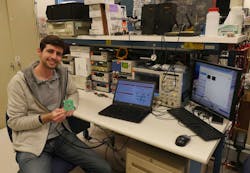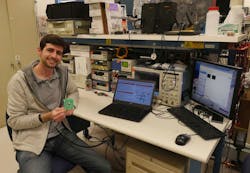What Goes Into a “Simple” Buck-Regulator Chip? (.PDF Download)
Analog semiconductor companies release buck-regulator chips so often you might think nothing of it. Yet there’s an enormous amount of work that goes into getting that silicon ready for sale. As a former application engineer, I can appreciate all the things that have to happen after the silicon is sorted out and working. I was reminded of this recently on a trip to Texas Instruments’ Silicon Valley campus.
1. Texas Instruments application engineer Sam Jaffe shows off his mHEV (mild hybrid electric vehicle) demo board. It has two power supplies, a buck regulator from 48 V to 12 V, and an isolated flyback from 12-V vehicle to 12-V isolated.

